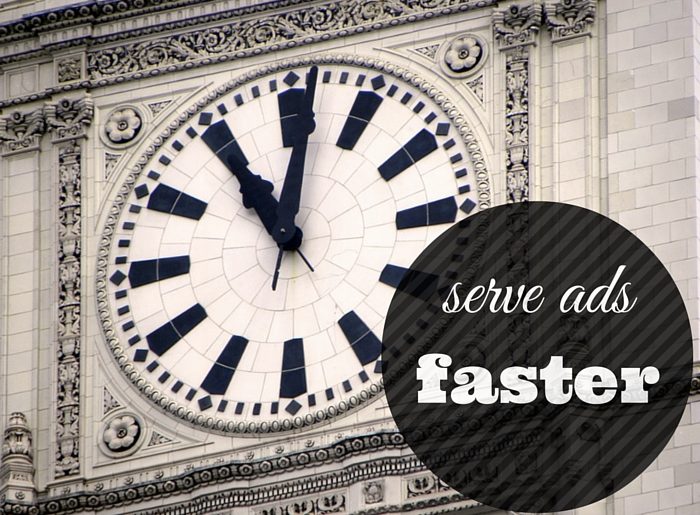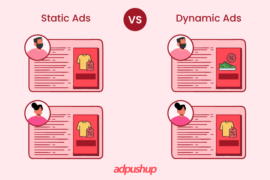We list out and explain 7 ways in which you can optimize your website for faster ad serving and consequently, higher ad revenue.
Faster ad serving typically translates into higher ad revenue and a better user experience. In this article, we’ll be looking at why page load and ad serving speeds are important and how you can improve them.
Have you ever visited a website and got frustrated with how slow a page is loading? If you’re like most, you probably left the site in favor of another that loads much faster. Most search engines also factor in page load time in their ranking algorithms now.
The bottom line is that a fast loading page will rank better, engage a user for longer, and consequently, generate more ad revenue for you.
Let’s explore the ways in which you can optimize your website for faster ad serving.
1. Reduce the Size of Image Files
The smaller the file size, the faster it loads. I’m sure you’ve visited a page that seemed to take forever to load. You have to sit there watching all the graphics load one by one. But, most people don’t. They hit their back button or just go on to another site.
Besides limiting the number of images on a page, you will want to optimize them. It’s best to keep file sizes below 600kb when possible. You can use an image editor to do this by resizing images or converting to an optimized format such as JPEG, or install a plugin that automatically resizes images.
2. Limit the Use of Slower Ad Networks
Not all ad networks are created equal. Many keep their networks optimized and running fast. Some do not, and slow your page load or ad serving times greatly. This of course reduces your users’ site experience and thereby reduces ad revenue.
Occasionally there is Internet congestion between your site and an ad network that can cause timeouts and slow ad serving. When you identify an ad network causing slow page loads, it’s best to stop using them until the problem is fixed or at least limit their use as much as possible.
3. Employ a Content Delivery Network
Content Delivery Networks (CDN) are large groups of high-speed servers deployed all over the world in strategic locations. When a CDN is used to deliver content or ads, the closest server in the CDN to the site visitor delivers the files. This speeds up the load time significantly.
Sign up for a CDN service for your website. Additionally, when selecting an ad network to use, check to see if they use a CDN. If you run your own ad server you can subscribe and use one of the many CDNs available.
4. Use Asynchronous Ad Codes
If an ad network you are using or the ad server script you are using lets you optionally use “Asynchronous Ad Codes”, by all means, use them. These codes allow the ad to load separately from the page displaying them. This prevents page load delays caused by an ad being served slowly.
5. Limit the Number of Ads per Page
The more ads that you display on a single page, the longer it will take to load. You need to have enough ads on a page to maximize your ad revenue but not so many that it degrades the visitor’s experience.
Analyze the ads on each page and keep the best-performing units. Remove any ads that are not doing well to help increase the page’s load speed. You may well find that removing poor-performing ads increases the overperformance of your ad setup.
6. Sign up for a VPS or dedicated server
Many people try to use a shared hosting account to run their website or host their ad server. Most inexpensive website hosting accounts are on shared servers and overloaded. This causes your webpages to load slowly. Similarly, if you’re running your ad server on a shared account, ads may be served very slow or even timeout, leading to lost revenue.
You’re better off hosting your website and server on a VPS or a dedicated server. You can get entry-level VPS accounts at very reasonable rates. You can then upgrade the VPS as you grow.
7. Optimize on-page elements
Consider if all the elements on your webpage are really needed.
Can you break a longer page into smaller pages by using pagination? Besides loading faster you will have the side benefit of showing more ads to a viewer.
Run speed tests using services like Google Pagespeed Tools, GTMetrix, and YSlow to find out which elements are slowing down your website and how you can fix them.
When designing a page, always keep in mind how fast it will load. The faster it loads, the better chance you have of getting more ad impressions and clicks.
Publishers can also try Publisher Ads Audits by Lighthouse to check the current ad speed and optimize as per the given details.
FAQs
By caching content close to where each end user accesses the internet via a web-enabled device, a CDN distributes content from an “origin” server across the globe. Content is first stored on the origin server, then replicated and stored elsewhere as needed.
The asynchronous ad code is likely to enhance the browsing experience of your site’s visitors. Your page’s content will not be slowed down by this ad code. As a result, the ads will load independently of the content on your pages and will not interfere with their loading.
Dedicated servers are a form of web hosting that allows a client to have exclusive use of an entire server for their own use.
A growth blog for professional bloggers and ad ops professionals.



![CTV vs OTT Advertising: Which one is Right Pick for Publishers? + [6 Bonus Strategies] Ott vs Ctv](png/featured-image-270x180.png)



